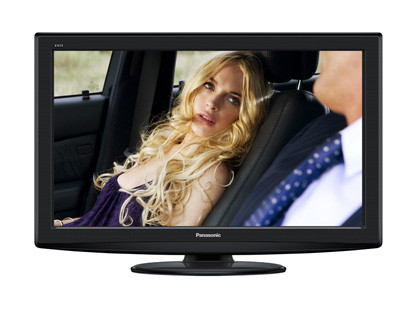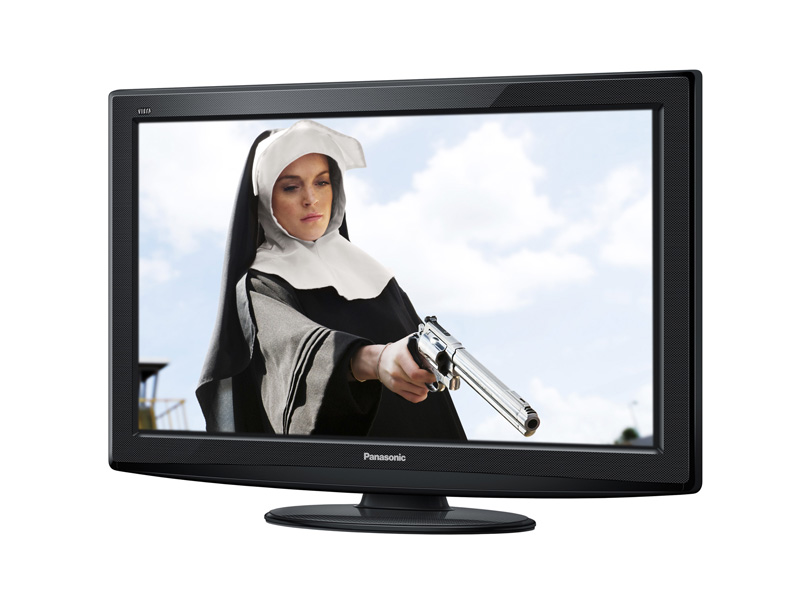Why you can trust TechRadar

Sound
While it's hardly in the upper echelon of flatscreen TVs that have decent audio (that honour goes to Philips), Panasonic's audio engineers have once again done an adequate job on the TX-L32X20B.
It's no substitute for a home cinema system, but the downfiring speakers are backed-up by audible low frequency that proves fine for everyday TV watching.
A simple equaliser is provided to tweak across the spectrum, while there's an option to set exactly how far from the wall the TV has been placed, with the subwoofer compensating. That measurement of a room's characteristics is ramped-up even more in the set's V-Audio options.
The standard setting creates a stereo soundstage that's noticeably wider and more nuanced, dragging up a lot of background detail than the plain old 'normal' setting. Panasonic says that this option is based on actual room measurement generated from the digital signal processor, though it goes a touch too far on V-Audio Surround; the effort to achieve surround sound from two speakers ends up in confusion with stereo effects too far separated. Music in particular suffers.
Perhaps Panasonic isn't too confident in these 'V' modes because there's no dedicated button on the remote, but the overall sound quality is a notch above the mainstream competition.
Value
The TX-L32X20B is available for as little as £369 online, and that's a fantastic price for this accomplished LCD TV.
The lack of LED backlighting might concern some, but if you're going to put the TX-L32X20B in a corner or on a AV stand, the rather bulky 8cm depth won't be an issue – and the financial saving is considerable. Plus, the TX-L32X20B's IPS Alpha has more than enough contrast to compete with budget LED-backlit LCD TVs from Panasonic's competitors.
There's little to get excited about in terms of advanced or multimedia features and the lack of a Freeview HD DVB-T2 tuner is rather short-sighted.
Ease of use
Media playback is disappointing. There's no USB slot to be found adorning the TX-L32X20B, though it does have something most TVs don't; a SD card slot, which is situated on the side-panel.
Photos can be displayed from within the Viera Image Viewer software, either as singles or as a slideshow, by accessing the SD card – either via a dedicated button on the remote, which disables all other inputs, or through Viera Tools, a set of icons that appear at the bottom of the screen.
They're presented as a bunch of thumbnails, though only JPEG files are recognised by the TX-L32X20B's severely limited media player software; TIFF and BMP files didn't work in our test. A slideshow can be started from anywhere in the grid by displaying the picture, then pressing the red button.
Pictures fade in and out nicely, and load quickly, though it's not possible to change the orientation of pictures, which is a shame. And a word of warning: have the mute button nearby unless you want your holiday snaps to be displayed to the sound of some decidedly dodgy lounge jazz (other dodgy tunes are available).
Video is more shabbily treated, with virtually no files handled. Only AVCHD files, which are produced by other Panasonic gear, are supported; some footage recorded on a Panasonic DMC-FZ45 camera in the AVCHD Lite format worked perfectly, complete with moving thumbnails on the home screen, but the samples we tried from third-party camcorders didn't work at all. Best, then, to keep it in the family if you're into hi-def filming.
And music? Oddly, the TX-L32X20B avoids this rather popular medium and can't even muster support for a humble MP3 file.
Current page: Panasonic TX-L32X20B: Sound, value, ease of use
Prev Page Panasonic TX-L32X20B: Picture quality Next Page Panasonic TX-L32X20B: VerdictJamie is a freelance tech, travel and space journalist based in the UK. He’s been writing regularly for Techradar since it was launched in 2008 and also writes regularly for Forbes, The Telegraph, the South China Morning Post, Sky & Telescope and the Sky At Night magazine as well as other Future titles T3, Digital Camera World, All About Space and Space.com. He also edits two of his own websites, TravGear.com and WhenIsTheNextEclipse.com that reflect his obsession with travel gear and solar eclipse travel. He is the author of A Stargazing Program For Beginners (Springer, 2015),

